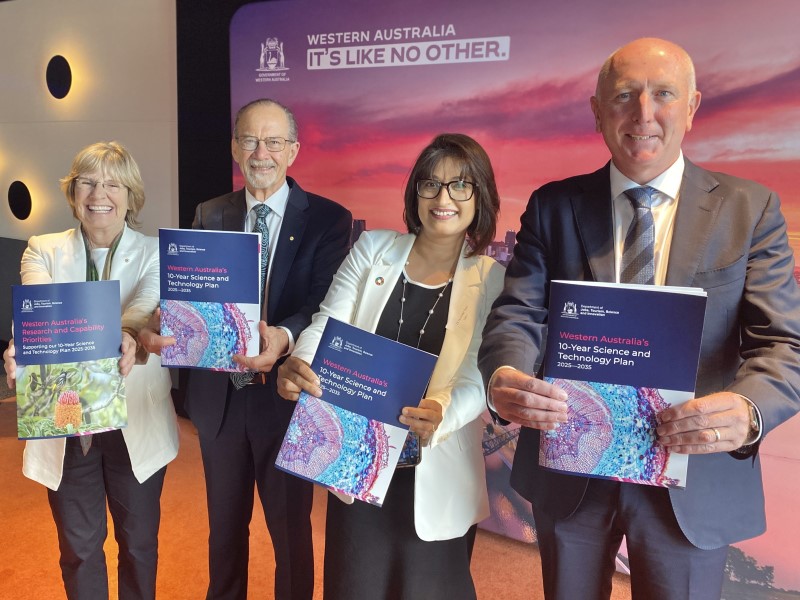Clean energy, critical minerals and emerging tech are among Western Australia’s new research priorities launched by the state government on Wednesday to support a new 10-year innovation plan.
The Science and Technology Plan is aiming to drive economic diversification in the resource-heavy state by supporting local researchers, industry and entrepreneurs through government procurement, challenge programs and the development of common-user infrastructure and precincts.
Implementation details and success metrics for the inaugural plan are yet to be established. The Department of Jobs, Tourism, Science and Innovation has been charged with delivery and will be supported by a yet to be appointed Science and Technology Council.

The six priority sectors of Western Australia’s first Science and Technology Plan are strategy are clean energy and decarbonisation, health and wellbeing, environment and sustainability, mineral supply and value adding, sustainable and secure food production, and critical and emerging technology.
The tech priority includes a focus on critical and emerging technologies such as AI, quantum, robotics, remote operations, radio astronomy, space technology and advanced manufacturing.
Wednesday’s announcement did not come with new funding but the strategy commits the state government to investing in future programs that can attract talent, develop common infrastructure and translates innovation. It also arrived with high-level commitment to new plans to “support ongoing reform of local procurement practices” that help innovative small and medium-sized and Aboriginal businesses enter the market.
Outgoing Western Australia chief scientist Professor Peter Klinken chaired the advisory group that supported development of the plan. In the plan’s foreword, he said Western Australia must address the “historical underinvestment in research and development”.
“It is through robust expenditure on research and development that we can harness the boundless opportunities for scientific discovery and technological advancement that lie ahead,” Professor Klinken said.
The government said the plan will be delivered across six strategic areas: skills; funding and investment; physical and digital infrastructure, leadership, collaboration and communication; translation, commercialisation and procurement; and policy, regulation and governance.
An action plan, key performance indicators, and a governance structure will be led by a Science and Technology Council, which is now seeking expressions of interest.
Public consultation with more than 1,000 stakeholders on the Science and technology Plan began in mid-2023 and was initially expected to be published in mid-2024.
Digital Economy and Science minister Stephen Dawson said the plan will be “a catalyst to seize opportunities, create jobs, improve our society and boost our economy”.
“This plan recognises the enormous strengths that our State has gleaned from remote operations for the resource industry to healthcare and renewables and builds on this capability to increase the impact science and technology has for our economy, communities and environment.”
Do you know more? Contact James Riley via Email.

